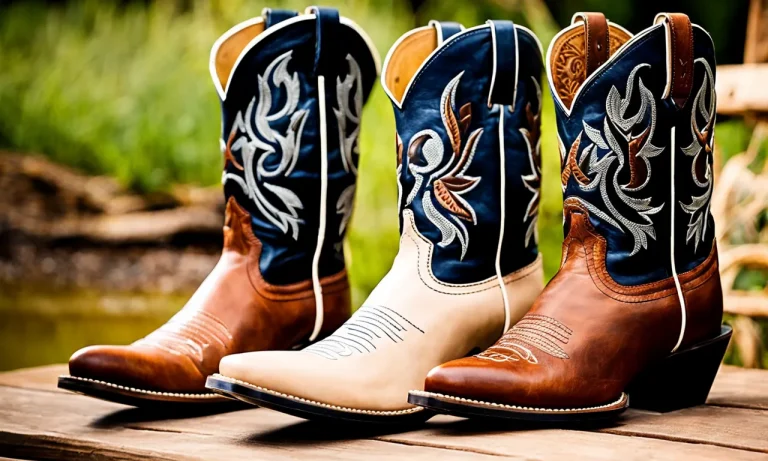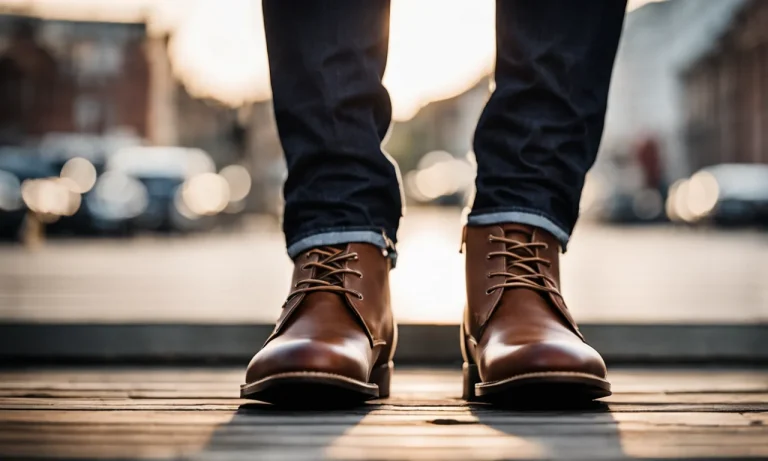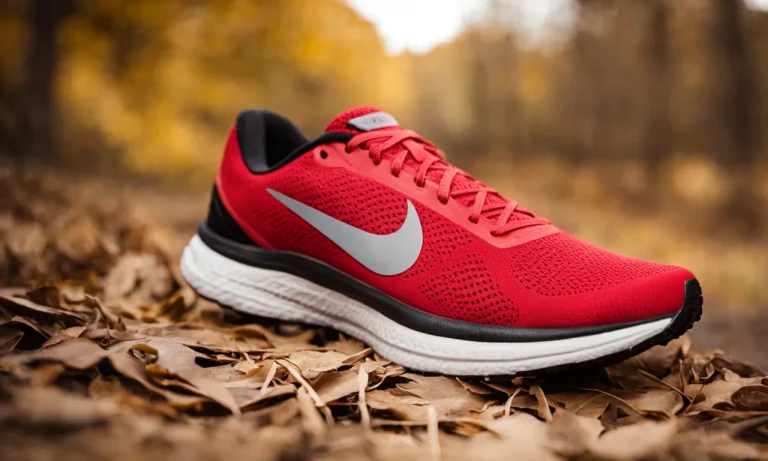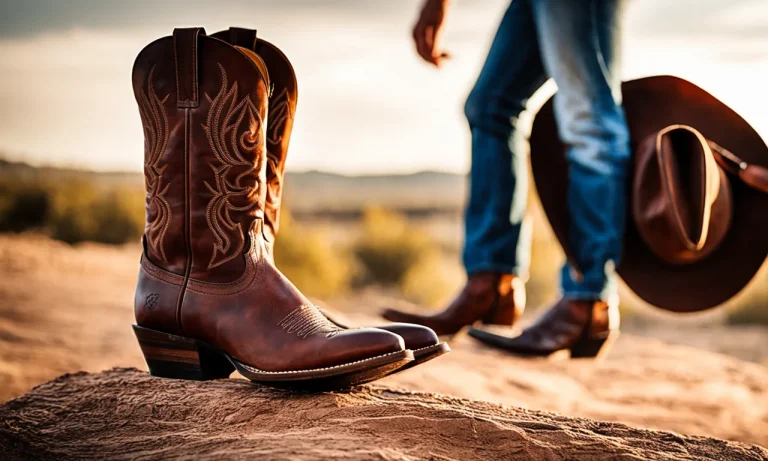Hiking boots are essential gear for any avid hiker or outdoors enthusiast. With their sturdy construction and grippy soles, hiking boots can help you traverse all types of terrain while protecting your feet and ankles.
But how long can you expect your trusty hiking boots to last before needing to be replaced? If you’re short on time, here’s a quick answer to your question: Most hiking boots will last 500-1000 miles before needing to be retired.
But many factors like usage, care and maintenance impact a hiking boot’s lifespan.
In this comprehensive guide, we’ll discuss the key factors that determine hiking boot longevity, how to extend the life of your boots, when to know it’s time to retire them, and recommendations for getting the most miles out of your boots.
Typical Lifespan of Hiking Boots
When it comes to hiking boots, their lifespan can vary depending on the usage and quality of the boots. Generally, hiking boots are designed to withstand the rigors of the outdoors and provide comfort and support to hikers.
However, it is important to understand that they are not indestructible and will eventually wear out over time.
Light Use – 500-800 Miles
For hikers who engage in light use, such as occasional day hikes or weekend trips, hiking boots can last between 500 to 800 miles. This mileage estimate is based on average hiking conditions and assumes that the boots are properly cared for and maintained.
It is essential to clean and dry the boots after each use to prevent the build-up of dirt and moisture, which can accelerate the wear and tear on the boots.
Moderate Use – 300-600 Miles
Hikers who use their boots more frequently, such as regular weekend hikers or those who go on multi-day hikes, can expect their hiking boots to last between 300 to 600 miles. The increased mileage is due to the more demanding terrain and longer duration of use.
It is important to check the condition of the boots regularly and replace them if there are signs of significant wear or damage.
Heavy Use – 200-400 Miles
For avid hikers or those who engage in long-distance backpacking trips, hiking boots may only last between 200 to 400 miles. The intense and prolonged use of the boots can lead to faster deterioration of the materials and decreased performance.
Regular inspections and maintenance are crucial for heavy-use hikers to ensure the safety and comfort of their feet on the trail.
It is important to note that these mileage estimates are general guidelines and may vary depending on individual factors such as body weight, hiking style, and terrain conditions. Additionally, the quality and durability of the hiking boots themselves can also affect their lifespan.
It is always recommended to consult the manufacturer’s guidelines and recommendations for specific boots.
For more information on hiking boots and outdoor gear, you can visit reputable websites such as REI or Outdoor Gear Lab.
Factors That Impact Boot Longevity
When it comes to the lifespan of hiking boots, several factors come into play. Understanding these factors can help you make informed decisions about the care and maintenance of your boots, and ultimately, extend their lifespan.
Here are some key factors that can impact how long your hiking boots last:
Type of Terrain
The type of terrain you regularly hike on can have a significant impact on the longevity of your boots. Rough and rocky terrains can put more strain on the materials and construction of your boots, causing them to wear out faster.
On the other hand, hiking on well-maintained trails or softer terrains may result in less wear and tear. It is important to choose boots that are suitable for the specific terrain you plan to hike on to ensure their longevity.
Frequency of Use
How often you use your hiking boots can also affect their lifespan. If you are an avid hiker who hits the trails every weekend, your boots will naturally experience more wear and tear compared to someone who only goes hiking occasionally.
Constant use can lead to the breakdown of materials and loss of cushioning and support. However, with proper care and maintenance, even heavily used boots can last for several years.
Weight Carried
The amount of weight you carry while hiking can impact the lifespan of your boots. Carrying heavy backpacks or loads puts more stress on your boots, especially on the outsoles and midsoles. Over time, this constant pressure can lead to faster wear and tear.
If you frequently carry heavy loads during your hikes, it is important to choose boots that are built to handle the extra weight and provide adequate support.
Fit and Sizing
Proper fit and sizing are crucial for the longevity of your hiking boots. Boots that are too tight or too loose can cause discomfort, blisters, and other foot problems. Moreover, ill-fitting boots can lead to uneven wear, as certain areas of the boots bear more weight and pressure.
It is recommended to have your feet measured by a professional and choose boots that provide a snug but comfortable fit.
Care and Maintenance
The way you care for and maintain your hiking boots can significantly impact their lifespan. Regular cleaning and proper storage can help prevent the buildup of dirt, grime, and moisture, which can degrade the materials over time.
Additionally, applying waterproofing treatments and conditioning the leather can help preserve the boots’ integrity. It is also important to inspect your boots regularly for any signs of damage or wear, and address them promptly to prevent further deterioration.
By considering these factors and taking appropriate measures, you can extend the lifespan of your hiking boots and continue to enjoy comfortable and reliable footwear on your outdoor adventures.
Signs It’s Time to Replace Your Boots
While hiking boots are designed to be durable and long-lasting, they do have a lifespan. Over time, wear and tear can take a toll on the boots, reducing their performance and compromising your safety on the trails. Here are some signs that indicate it’s time to replace your hiking boots:
Excessive Tread Wear
The tread on hiking boots is crucial for providing traction and stability on various terrains. As you hike, the tread gradually wears down, reducing its effectiveness. If you notice that the tread on your boots is significantly worn out, with shallow grooves or even smooth areas, it’s a clear indication that it’s time for a new pair.
Worn-out tread can increase the risk of slipping or losing your footing on slippery or uneven surfaces.
Cracks in Soles or Uppers
Inspect the soles and uppers of your hiking boots regularly for any cracks or signs of damage. Cracks in the soles can compromise their durability and shock absorption, while cracks in the uppers can result in reduced support and protection.
If you find any significant cracks that cannot be repaired, it’s best to replace your boots to avoid further deterioration and potential foot injuries.
Lack of Support and Stability
One of the primary purposes of hiking boots is to provide support and stability to your feet and ankles. Over time, the materials in the boots may start to break down, resulting in a loss of supportiveness.
If you notice that your boots no longer provide the same level of support as they used to, or if you feel unstable while walking on uneven terrain, it’s a sign that they have reached the end of their lifespan.
It’s important to prioritize your safety and invest in a new pair of boots that can provide the necessary support.
Leaking/Moisture
Waterproofing is an essential feature of hiking boots, as it helps keep your feet dry and comfortable in wet conditions. If you find that your boots are no longer waterproof and are letting in moisture, it’s a sign that the waterproof membrane or coating has deteriorated.
Wet feet can lead to discomfort, blisters, and even more serious foot problems. It’s time to replace your boots if they are no longer keeping your feet dry during hikes.
Uncomfortable Fit
Hiking boots should fit snugly and comfortably, providing ample room for your toes to wiggle without feeling cramped. However, over time, the materials in the boots can lose their shape and cushioning, resulting in an uncomfortable fit.
If you experience persistent discomfort, pain, or hot spots while wearing your boots, it’s a clear indication that they are no longer providing the necessary comfort and support. Consider replacing them with a new pair that fits properly and allows you to enjoy your hikes without discomfort.
Remember, replacing your hiking boots is not just about wear and tear; it’s about ensuring your safety and comfort on the trails. Regularly inspect your boots for these signs, and when it’s time, invest in a new pair that will serve you well on your outdoor adventures.
Tips to Extend the Lifespan of Your Boots
Buy for the Right Terrain
One of the best ways to ensure the longevity of your hiking boots is to buy a pair that is suitable for the terrain you will be hiking on. Different terrains require different types of boots, so it’s important to do your research and choose a pair that is designed for the specific conditions you will encounter.
If you’re planning on hiking in rugged, rocky terrain, opt for boots with a sturdy sole and ankle support. If you’ll be hiking in wet conditions, look for boots that are waterproof or water-resistant. Buying boots that are appropriate for the terrain will not only help them last longer, but also enhance your comfort and safety while hiking.
Rotate Multiple Pairs
If you’re a frequent hiker, consider investing in multiple pairs of hiking boots and rotate them regularly. This allows each pair to have ample time to dry out and recover between hikes, reducing the risk of wear and tear caused by constant use.
Alternating between boots also helps to prevent the development of odors and extends the lifespan of each individual pair. Additionally, having multiple pairs of boots gives you the flexibility to choose the most appropriate pair for each hike based on the terrain and weather conditions.
Clean and Condition Regularly
Proper cleaning and conditioning of your hiking boots is essential to keep them in good shape. After each hike, remove any dirt, mud, or debris from the boots using a soft brush or cloth. Pay special attention to the seams and crevices where dirt can accumulate.
Once clean, allow the boots to air dry before applying a suitable boot conditioner to maintain the leather’s flexibility and prevent cracking. Regular cleaning and conditioning not only prolongs the lifespan of your boots but also helps to maintain their waterproofing properties.
Replace Laces
Don’t overlook the importance of laces in preserving the lifespan of your hiking boots. Over time, laces can become worn, frayed, or even break. Replace them as soon as you notice any signs of damage to prevent further deterioration and ensure a secure fit.
It’s a simple and inexpensive fix that can significantly extend the lifespan of your boots.
Use Boot Dryers
Moisture and dampness can cause damage to hiking boots, so it’s important to dry them thoroughly after each use. One effective way to do this is by using boot dryers. These devices use gentle heat and airflow to remove moisture from the boots, preventing the growth of mold and bacteria.
Boot dryers not only help to extend the lifespan of your boots but also enhance their comfort by keeping them dry and odor-free.
Resole When Needed
The soles of hiking boots are subjected to a lot of wear and tear, especially if you frequently hike on rugged terrains. Over time, the tread on the soles may wear down, reducing their grip and traction.
When you notice significant wear on the soles, consider getting them resoled by a professional cobbler. This relatively inexpensive repair can breathe new life into your boots and prolong their lifespan.
Incorporating these tips into your hiking boot care routine will help you get the most out of your investment. Remember, well-maintained boots not only last longer but also provide better support, comfort, and protection during your hiking adventures.
Getting the Most Miles out of Your Boots
When it comes to hiking, having a reliable pair of boots is essential. But how long do hiking boots actually last? While there isn’t a definitive answer, there are several factors that can affect the lifespan of your boots.
By following a few simple tips, you can maximize the longevity of your hiking boots and get the most miles out of them.
Choose the Right Materials
The materials used in the construction of your hiking boots play a significant role in determining their durability. Opt for boots made from high-quality materials such as full-grain leather or synthetic fabrics like nylon or Gore-Tex.
These materials are not only durable but also provide excellent water resistance and breathability. Additionally, look for boots with sturdy outsoles made from rubber or Vibram for enhanced traction and longevity.
Break in Properly
One common mistake hikers make is not properly breaking in their boots before hitting the trails. Wearing your boots around the house or on shorter walks before embarking on a long hike allows them to mold to the shape of your feet and reduces the risk of blisters and discomfort.
Take the time to break in your boots gradually, and they’ll be more comfortable and supportive in the long run.
Use Orthotics for Support
If you have specific foot conditions or require extra support, consider using orthotics in your hiking boots. Orthotics can help alleviate pain, improve stability, and prevent injuries. They are custom-made inserts that provide additional arch support and cushioning.
Consult with a podiatrist or orthopedic specialist to determine if orthotics are right for you.
Address Fit Issues Quickly
Don’t ignore any fit issues that may arise with your hiking boots. Whether it’s a hot spot, pressure point, or discomfort, addressing these problems promptly can prevent further damage and extend the life of your boots.
Consider adjusting the laces, adding padding or insoles, or seeking professional assistance to ensure a proper fit. Remember, a comfortable fit is crucial for preventing blisters and other foot-related problems.
Carry Pack Weight Properly
When hiking with a backpack, it’s important to distribute the weight properly to avoid unnecessary strain on your feet and boots. A heavy pack can put additional pressure on the soles and cause premature wear and tear.
Use a pack with a sturdy frame and adjustable straps to distribute the weight evenly across your hips and shoulders. This will help reduce the impact on your boots and increase their lifespan.
By following these guidelines, you can ensure that your hiking boots last longer and provide you with the support and comfort you need on your adventures. Remember, taking care of your boots is an investment in your hiking experience.
Conclusion
With proper care and maintenance, you can expect hiking boots to last 500-1000 miles on average before needing replacement. Pay attention to signs of excessive wear and tear, and don’t wait too long to retire boots once their support and stability is compromised.
Investing in high quality hiking boots, keeping up with cleaning and conditioning, and following boot care best practices will help maximize the lifespan of your footwear. With a strategic approach, your boots can comfortably accompany you across countless trails and terrain for miles to come.






